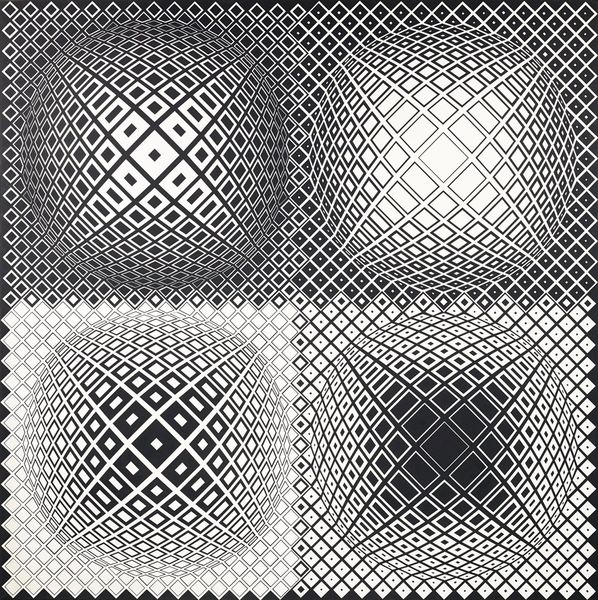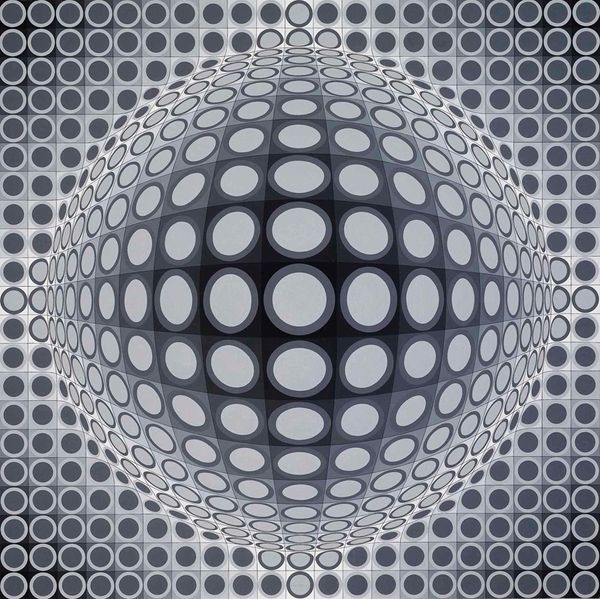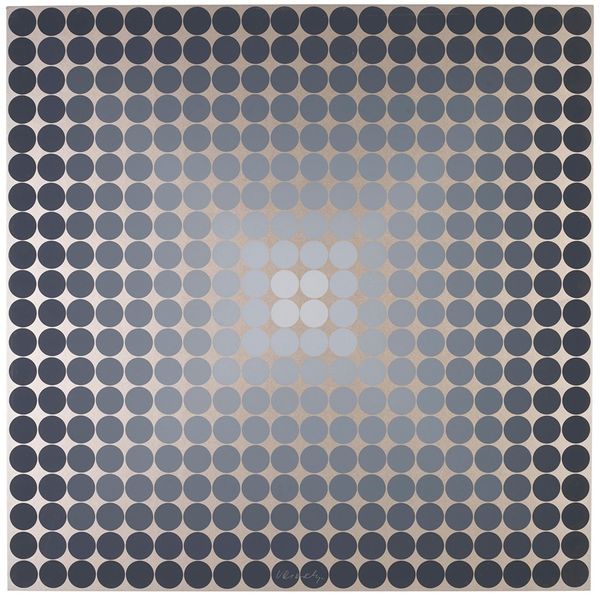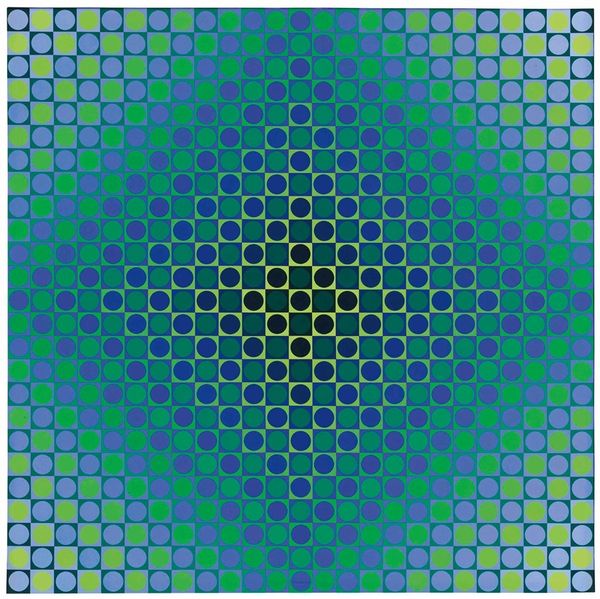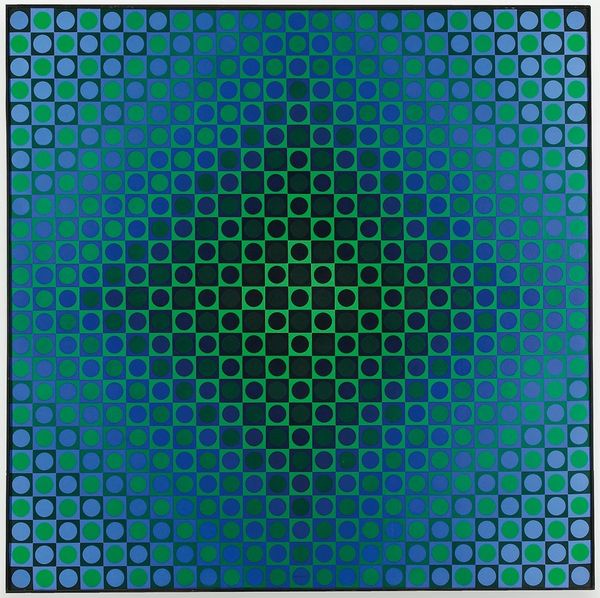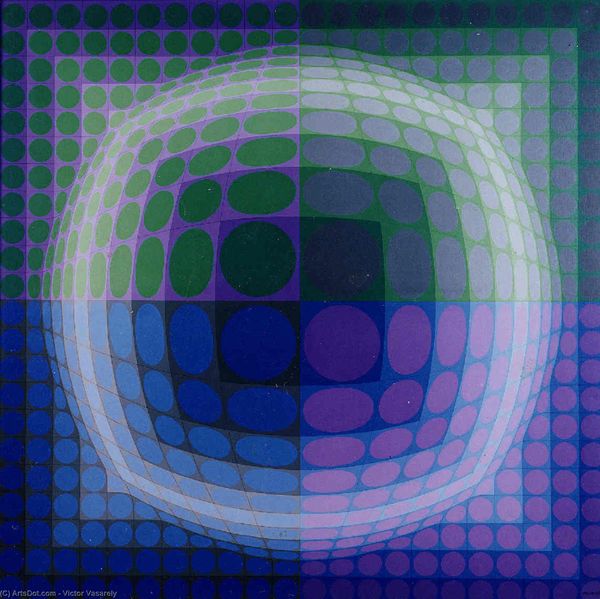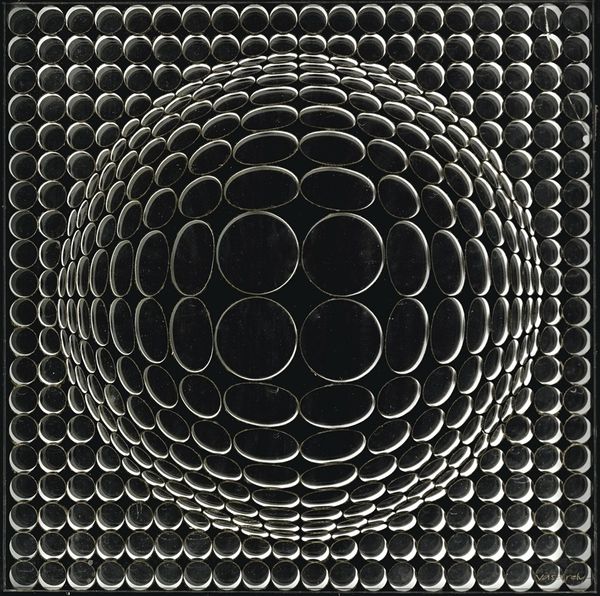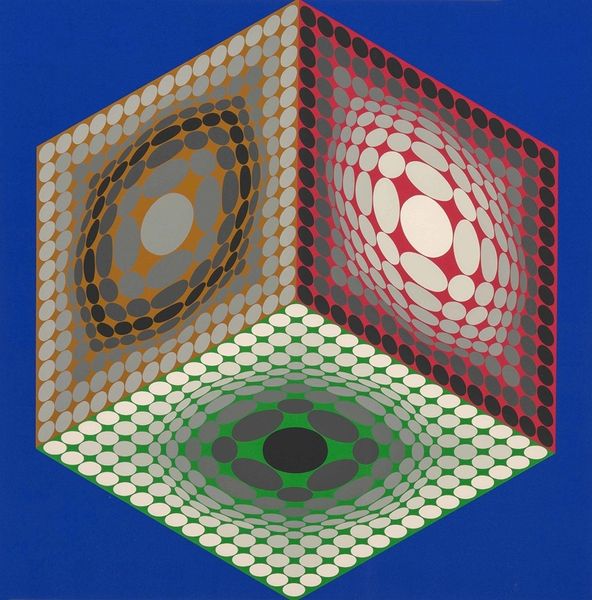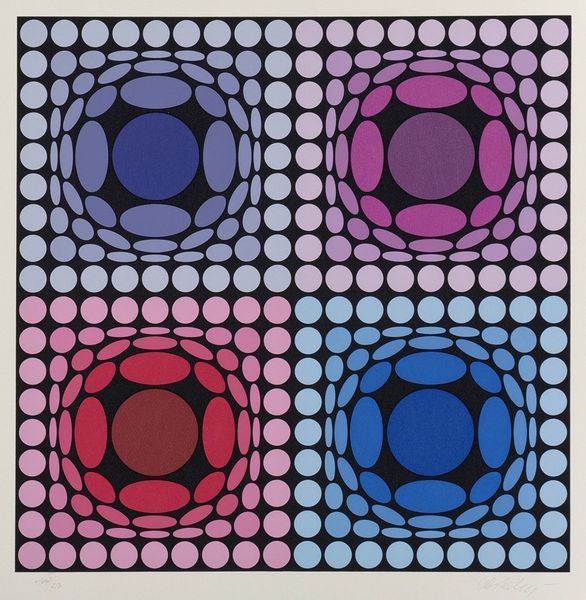
acrylic-paint
#
kinetic-art
#
op-art
#
acrylic-paint
#
abstract
#
geometric pattern
#
subtle pattern
#
repetitive shape and pattern
#
geometric-abstraction
#
repetition of pattern
#
vertical pattern
#
pattern repetition
#
layered pattern
#
funky pattern
#
combined pattern
#
modernism
#
repetitive pattern
Copyright: Modern Artists: Artvee
Curator: Victor Vasarely's "Kat-Tuz", created between 1972 and 1975 using acrylic paint, is a powerful example of his Op Art explorations. Editor: My first impression is that it’s disorienting! It’s got this almost dizzying effect of spheres pushing out from the surface. There’s something playful, almost retro-futuristic, about it too. Curator: Yes, that's classic Op Art. Vasarely was fascinated by geometric abstraction, using these compositions to challenge viewers’ perception and explore the relationship between art and technology. "Kat-Tuz" sits within a larger historical narrative of post-war art that questioned traditional representation. We could look at its position relative to the burgeoning computer art scene for instance. Editor: Exactly. The geometric abstraction plays with perception in a very deliberate way. There’s this tension between flatness and depth; the piece creates the illusion of three-dimensionality on a two-dimensional surface. It makes me think about accessibility to art in a democratic society; it looks reproducible, and I wonder what statement that might make? Curator: Interesting point! Consider the political landscape of the 70s; social upheaval, technological advancement, the rise of consumer culture. Vasarely's work engages with this context by challenging viewers' expectations and questioning what art can be and who it's for. Its stark blacks and whites create a sense of dynamism and the infinite. The circles might also be seen as lenses, which asks us to think about different points of view. Editor: And that's also evident in how he subverts traditional artistic hierarchies. It's interesting to see a style that might be conceived for mass production and consider its location here, inside the rarified space of the gallery. Curator: Definitely. Placing this piece within the setting of the museum itself begs us to consider these socio-political forces at play. How the market shapes and defines our encounters. It’s almost provocative to see the way we perceive its optical illusion in the same space as more conventional landscape paintings. Editor: So, beyond just being a visual puzzle, "Kat-Tuz" can be seen as a reflection of the social and technological anxieties and possibilities of its time. A dialogue between abstraction and lived experience. Curator: I've found that Op Art continues to offer valuable insights into the intersection of perception, technology, and societal change, proving art holds value beyond solely aesthetic beauty.
Comments
No comments
Be the first to comment and join the conversation on the ultimate creative platform.
